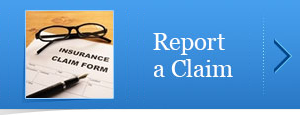How to Protect Yourself Against Accident Fraud
Accident fraud happens all the time. Victims of accident fraud are usually forced to become the "at-fault" party in an accident. Insurance Calculator Inc. is the leading auto insurance provider in the United States. We have seen and have dealt with many victims of accident fraud and staged accidents. To help consumers protect themselves in such events, our goal is to help them to be aware of different types of accident fraud and the different methods to protect themselves from becoming the victims.
Types of Staged Accidents and Accident Fraud
1. Merge and Brake - This type of accident happens more frequently during night time, especially when there are only 2 cars on the road - you and the dishonest driver. The dishonest driver will merge in front of you and step n the brakes, resulting in a rear-ended collision. In a rear-ended collision, the vehicle at the back is usually considered to be the one at fault. When there are no witnesses on your side, you will be considered to be at fault since you cannot prove the sudden merge and intentional brakes.
2. Right Turn and Brake - This is similar to "Merge and Brake". The dishonest driver in front of you makes a right turn and steps on the brakes hard. We often have most of our attention on the left when we make a right turn. Dishonest drivers will take advantage of that and make the unnecessary brakes to cause a rear-ended collision intentionally.
3. Intentional Reverse - This type of accident happens the most when 2 vehicles are driving up-hill - you and the dishonest driver. The dishonest driver in front of you, while both vehicles are at full stop (e.g. intersections), will intentionally switch to the N-gear (Neutral), causing his/her vehicle to roll backwards and hit your vehicle, resulting in a rear-ended collision. When insurance companies look into the scenario, in a rear-ended collision, you will most likely be convicted of failing to apply enough brakes in time.
4. Fake Yielding - This type of accident occurs in various type of forms. The dishonest driver will wave at you making you think that he/she is letting you go first, but will crash onto you when you make a move. The dishonest driver often has a pre-arranged witness testifying for themselves. Common areas of occurrence include 3/4-Way stop intersections, parking lots...etc.
5. False Claims - In a not-at-fault accident, the dishonest driver (at-fault party) will find someone to testify the accident when it is reported to the police and his/her insurance company. When you do not have anyone to testify for you (e.g. it was obvious when the accident happened and the dishonest driver appeared to have taken all the responsibilities at the time), the other party can easily alter the details of the accident.
Why Does It Happen?
The cost on insurance premium increases when the policy holder runs into at-fault accidents. Dishonest drivers will be tempted to alter the details of the accident to protect themselves from being convicted to be at-fault.
Accident fraud and crime occurs because criminals take advantage of the cost on your insurance premium. They do it usually for direct monetary compensation (e.g. cash). They will convince you to compensate them right the way by making you think that you are at fault in the accident and that they are willing to not go through the claim process should you choose to compensate them immediately.
How to Protect Yourself Against Staged Accidents and Accident Fraud?
1. Learn and Be Aware of How It Happens - "Knowing your enemy is half the battle." By being aware of how staged accidents happen, you are better off in preventing them from happening in the first place. For example, in a "Merge and Brake" or "Right Turn and Brake" scenarios, you will pay a lot more attention and act more quickly when a vehicle merges in front of you or makes a right turn. You will be more cautious and keep the distance from the vehicle in front of you.
2. Install Dashboard Camera - A dashboard camera records the front view of your vehicle while you drive. This creates video evidence on the details of the accident. So if someone merges in and jams on the brakes, he/she better have a good explanation on what the brakes are for. This will help the police to better investigate and identify accident crime.
3. Do Not Tailgate. Keep Your Distance - If you keep a good distance from the vehicle in front of you, you will have a lot more time to react to sudden brakes from the vehicle ahead.
4. Grab All the Details and Take Plenty of Photos - Get the names and phone numbers of all the people involved in the accident, including witnesses. Record all the plate numbers, driver's license, vehicle model, make, and year, vehicle color, time and location of the accident...etc. Take as much photos as you can. The more details you have the better you are at presenting the accident to the police and your insurer.
5. Report Scams - Call the National Insurance Crime Bureau if you suspect a scam, during or after the accident, at 1.800.835.6422
Previously on Our Insurance Blog
- Applying for Driver License in California
- How to Protect Yourself in a Car Accident - Steps to Take
- Save More on Car Insurance by Improving the Security Rating of Your Vehicle

